In case anyone else has a similar issue, I got the same error message when using a personal Microsoft account, just like OP.
So, if you are using a personal account in a registered Azure Active Directory(AAD) app, that type isn't Personal Microsoft accounts only or Accounts in any organizational directory (Any Azure AD directory - Multitenant) and personal Microsoft accounts (e.g., Skype, Xbox) you will get this error. Also, you need to use the correct endpoint to avoid errors.
The main problem is our account type. As a personal account, there are some restrictions to access one drive files. These restrictions are:
- You can only use
Oauth2 Code Flow or Oauth2 Token Flow. Both are interactive approaches. [1][2]
- Your application registered in AAD needs to be
Personal Microsoft accounts only or Accounts in any organizational directory (Any Azure AD directory - Multitenant) and personal Microsoft accounts (e.g. Skype, Xbox) and each one have a different endpoint to acquire the access token (That you can see clicking on endpoint button, near the delete app button in app page). [3]
- Enable these delegated permissions to your application registered in AAD:
Files.Read, Files.Read.All, Files.ReadWrite, and Files.ReadWrite.All.
With these restrictions in mind, you can set up a workflow in Postman following these two steps(I'm using endpoints of Personal Microsoft accounts only app type and using Oauth2 Code Flow):
Important note: To use code flow, you need to enable Access tokens in Implicit grant and hybrid flows on Authentication ADD app sidebar menu.
- Aquire access token:
https://login.microsoftonline.com/consumers/oauth2/v2.0/authorize?client_id=YOUR_CLIENT_ID&response_type=token&redirect_uri=ONE_OF_REGISTERED_REDIRECT_URI&scope=Files.Read Files.Read.All Files.ReadWrite Files.ReadWrite.All
After you fill in your information on Postman's request, I recommend using a browser and network inspection to log in with a Microsoft account and permit the app. You are getting the access token via network inspection.
- List one drive root files:
https://graph.microsoft.com/v1.0/me/drive/root/children
Add a new header:
Authorization
With value:
Bearer ACCESS_TOKE_OF_STEP_1
In my angular application, due to this interactive way restriction to access one drive files, I changed my authentication method to use Microsoft Authentication Library(MSAL) to avoid every time that need to send an API request open a popup window to authenticate a valid Microsoft account.
